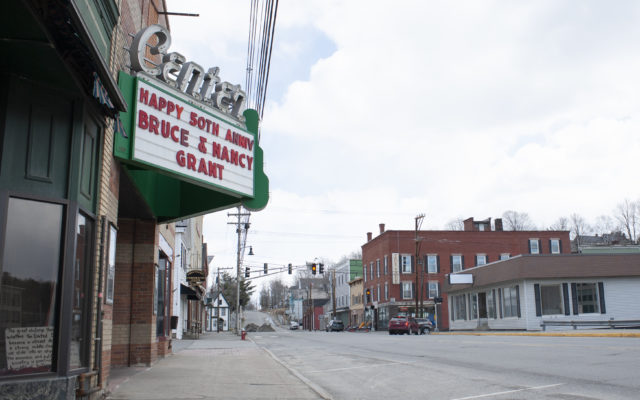
A model says Maine can ease coronavirus restrictions by mid-May, but CDC isn’t using it
Click here for the latest coronavirus news, which the BDN has made free for the public. You can support our critical reporting on the coronavirus by purchasing a digital subscription or donating directly to the newsroom.
A widely used model that projects the path of the coronavirus outbreak in each state estimates that Maine could start relaxing its social distancing rules by May 13. But that prediction includes a number of conditions that have yet to be met.
The newly released projection by researchers at the University of Washington puts Maine among nine states that could start easing its social distancing rules by mid-May. That’s when the researchers predict the state’s rate of COVID-19 infections would fall below one for every 1 million residents. The Institute for Health Metrics and Evaluation model estimates that 12 states won’t be in that position until June 8 or later.
[Our COVID-19 tracker contains the most recent information on Maine cases by county]
The Maine Center for Disease Control and Prevention has relied on the institute’s model and two others put together by outside researchers to plan for different scenarios of how the coronavirus pandemic could play out in the state.
But decisions on reopening the state will be based on Maine’s own experience with coronavirus over the past several weeks as opposed to external projections, Maine Center for Disease Control and Prevention Director Nirav Shah said Wednesday.
“It’s less at this point about relying on a model,” he said. “Right now, what’s driving our decision and our thinking about any reopening is much less about a model and much more the day-to-day figures.”
As of Wednesday, the state had confirmed 907 cases of the highly contagious respiratory infection in all 16 counties. Thirty-nine people in Maine have died from the virus while about half of those with confirmed diagnoses have recovered. Hospitalizations for the virus have declined recently, but Shah has said the state is “still very much in the thick” of the outbreak and hospitalization numbers could easily fluctuate.
The Institute for Health Metrics and Evaluation says its projections are valid as long as a number of other containment strategies are in place, such as widespread testing and contact tracing, and isolation of new cases. But while testing has become gradually more widespread, researchers at Harvard University have predicted that the country needs to triple its rate of testing before the country can safely reopen.
Shah has also said the state still needs to ramp up contact tracing — essentially, work that identifies how someone became infected and identifies everyone he or she might have infected. He said the Maine CDC has brought on retirees to perform that work and would eventually like to have 30 state employees doing contact tracing, which can help health officials more precisely identify where infections remain so they can be contained.
The researchers’ model also assumes that after easing some of the current rules, some degree of social distancing will still be in place, such as bans on large gatherings.
A number of researchers have criticized the Institute for Health Metrics and Evaluation model for the level of certainty it attaches to its predictions — it projects dates rather than ranges of dates and different probabilities — and its assumption that its projections have more certainty as it moves further into the future. It also predicted an earlier date than other models for when the U.S. would hit its peak number of daily deaths from the coronavirus.
The model is based largely on the experience of the coronavirus where it originated, in Wuhan, China.
More than a month into the outbreak in Maine, Shah said that the value of that model has diminished in comparison with local experience and data.
“It’s really more about localization and the data that we’ve got and the experience we’ve had as opposed to what might’ve happened a couple of months ago in another country,” he said.